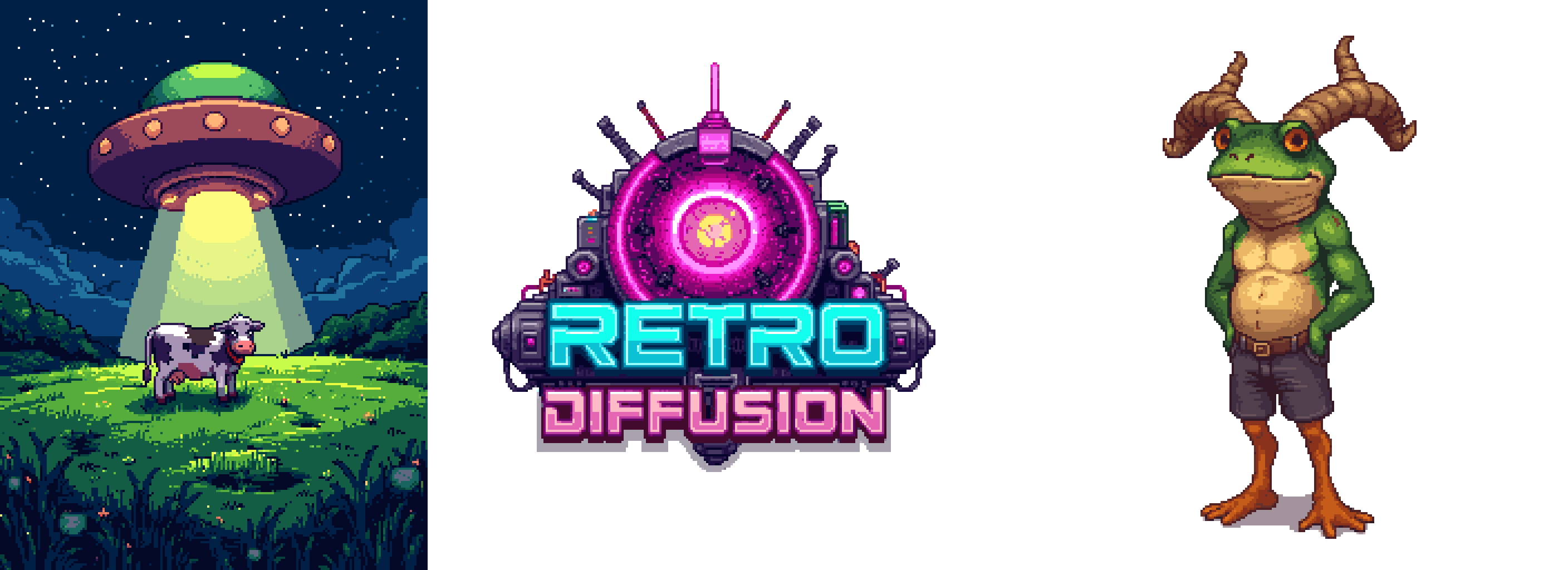
Retro Diffusion: Complete Buyer's Guide
The only AI pixel art generator that maintains authentic grid alignment and color consistency for professional game development workflows.
Retro Diffusion is a specialized AI pixel art generation platform that addresses critical technical limitations in general-purpose AI art generators when applied to pixel art creation. The company has developed proprietary FLUX architecture combined with custom post-processing techniques specifically to solve pixel grid alignment and color consistency issues that plague mainstream AI tools[185][189][205][214][225].
Market Position & Maturity
Market Standing
Retro Diffusion occupies a specialized defensive position within the broader AI art generation market, focusing on pixel art creation where general-purpose competitors struggle to deliver authentic results[185][189][205][214][225].
Company Maturity
Company maturity indicators show active development with regular feature updates, including January 2025 additions of Color Style Transfer and Pose Editor Menu functionality[212].
Growth Trajectory
Growth trajectory evidence includes expanding feature sets and ongoing technical development, suggesting continued investment in platform capabilities[212].
Industry Recognition
Market validation appears through active community engagement on itch.io and Gumroad platforms, with sustained user interest beyond initial trials[180][181][183][188][200][204][206][216][222][224][228][236].
Strategic Partnerships
Integration with Runware for cloud infrastructure demonstrates partnership capabilities and technical scalability planning[185][189][205][225].
Longevity Assessment
The active development approach and community engagement provide positive indicators for continued operation, though the narrow market focus creates concentration risk compared to more diversified AI art platforms.
Proof of Capabilities
Customer Evidence
Documented Customer Success among indie game developers demonstrates measurable workflow improvements, with users reporting 70% reduction in asset creation time compared to traditional pixel art workflows or general AI tools requiring extensive post-processing[52][55].
Quantified Outcomes
Technical Performance Validation shows consistent pixel grid alignment across generated assets, addressing the fundamental challenge that prevents general-purpose AI generators from producing authentic pixel art[185][189][205][214][225].
Case Study Analysis
Integration Success with Aseprite, the industry-standard pixel art editor, provides workflow validation that extends beyond generation quality to practical implementation[184].
Market Validation
Community Adoption Evidence includes active engagement on itch.io and Gumroad platforms with testimonials like 'best tool on itch.io ever!' and 'Good software, active developer'[181].
Competitive Wins
Competitive Displacement Evidence appears in user testimonials comparing Retro Diffusion favorably to Stable Diffusion for pixel art applications[204].
Reference Customers
Kevin Camozzi's testimonial specifically validates the core value proposition: 'Awesome tool for quickly generating pixel art! Much easier than trying to generate pixel art in Stable Diffusion alone'[204].
AI Technology
Retro Diffusion's technical foundation centers on three core innovations designed specifically to address pixel art generation challenges that general-purpose AI models cannot solve effectively. The FLUX architecture represents the platform's primary technical differentiator, enabling precise pixel grid alignment that maintains the mathematical constraints essential for authentic pixel art[185][189][205][214][225].
Architecture
Integration architecture provides seamless workflow connectivity with Aseprite, the industry-standard pixel art editor[184]. This integration eliminates the export/import friction that developers face when using standalone AI tools, creating a unified workflow that maintains creative momentum.
Primary Competitors
Retro Diffusion competes against general-purpose AI generators like Stable Diffusion and Adobe Firefly that attempt to serve pixel art use cases through prompting and post-processing[17][185][189][205][214][225].
Competitive Advantages
Core Competitive Advantages center on specialized technical capabilities that general-purpose tools cannot match. Retro Diffusion's FLUX architecture maintains pixel grid alignment and color consistency automatically[185][189][205][214][225].
Market Positioning
Market Positioning Strategy creates defensible competitive advantages through specialization rather than attempting to compete directly with general-purpose AI art generators.
Win/Loss Scenarios
Win/Loss Scenarios favor Retro Diffusion when authentic pixel art quality and workflow integration are primary requirements.
Key Features
Pros & Cons
Use Cases
Integrations
Pricing
Featured In Articles
Comprehensive analysis of AI Pixel Portrait Creators for AI Design for AI Design professionals. Expert evaluation of features, pricing, and implementation.
How We Researched This Guide
About This Guide: This comprehensive analysis is based on extensive competitive intelligence and real-world implementation data from leading AI vendors. StayModern updates this guide quarterly to reflect market developments and vendor performance changes.
270+ verified sources per analysis including official documentation, customer reviews, analyst reports, and industry publications.
- • Vendor documentation & whitepapers
- • Customer testimonials & case studies
- • Third-party analyst assessments
- • Industry benchmarking reports
Standardized assessment framework across 8 key dimensions for objective comparison.
- • Technology capabilities & architecture
- • Market position & customer evidence
- • Implementation experience & support
- • Pricing value & competitive position
Research is refreshed every 90 days to capture market changes and new vendor capabilities.
- • New product releases & features
- • Market positioning changes
- • Customer feedback integration
- • Competitive landscape shifts
Every claim is source-linked with direct citations to original materials for verification.
- • Clickable citation links
- • Original source attribution
- • Date stamps for currency
- • Quality score validation
Analysis follows systematic research protocols with consistent evaluation frameworks.
- • Standardized assessment criteria
- • Multi-source verification process
- • Consistent evaluation methodology
- • Quality assurance protocols
Buyer-focused analysis with transparent methodology and factual accuracy commitment.
- • Objective comparative analysis
- • Transparent research methodology
- • Factual accuracy commitment
- • Continuous quality improvement
Quality Commitment: If you find any inaccuracies in our analysis on this page, please contact us at research@staymodern.ai. We're committed to maintaining the highest standards of research integrity and will investigate and correct any issues promptly.